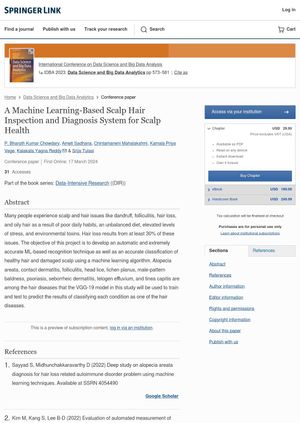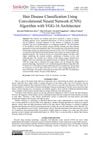A Machine Learning-Based Scalp Hair Inspection and Diagnosis System for Scalp Health
January 2024

TLDR The system can automatically identify different hair and scalp conditions using machine learning.
The project aims to develop an automatic and highly accurate machine learning-based recognition technique for the classification of healthy hair and damaged scalp. The system uses a machine learning algorithm to identify and classify various hair diseases, including alopecia areata, contact dermatitis, folliculitis, head lice, lichen planus, male-pattern baldness, psoriasis, seborrheic dermatitis, telogen effluvium, and tinea capitis. The VGG-19 model is used in this study to train and test the prediction of classifying each condition as one of the hair diseases. This system could potentially help in diagnosing hair loss, which results from at least 30% of scalp and hair issues caused by poor daily habits, an unbalanced diet, high stress levels, and environmental toxins.







